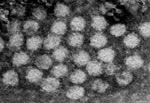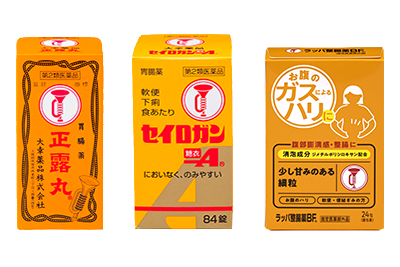Sanitation Control Basic Knowledge
What are Noroviruses?

Noroviruses
Takeshi Sanekata, PhD
Norovirus was named after the place Norwalk in Ohio, where it was first discovered in the 1960s. It was called the small round structured virus (SRSV) in the 1970s, however, since 2002 it is called norovirus.
Acute gastroenteritis caused by Noroviruses
There has been a recent increase in food poisoning following a norovirus infection. Although winter is the peak season for noroviruses, at present, infection is reported throughout the year. Common symptoms of infection include vomiting and diarrhea for 2–3 days, with subsequent, stability in the condition of the patient. However, the condition of the elderly patients who have a weaker resistance gets worse, and can sometimes be fatal.
Following infection by noroviruses
The incubation period of noroviruses is about 24–48 h. Major symptoms of infection include vomiting, diarrhea (watery stool), abdominal pain, mild fever (under 38°C) and headache, similar to those of cold-induced acute gastroenteritis. In general, a patient can recover in 2–3 days, and the condition is subsequently quite stable following the incidence. After the symptoms subside, viruses will continue to be excreted in the stools for another 1–2 weeks, sometimes up to a month.
Dehydration, if any, can be relieved by IV administration of fluids. A vaccine for noroviruses has not yet been invented.
Mode of transmission
This virus is transmitted orally and the possible ways of transmission include:
- Eating uncooked oysters or under cooked shell fish contaminated by the virus.
- Fecally contaminated food or water, i.e., people cooking at home, in restaurants or group-living facilities, or workers in food processing factories, who are infected by the virus after contact with excretion of an infected person.
- Use of contaminated cooking utensils.
- Inhalation of viruses spread in the air after the spew of an infected person has dried.
- Transmission between individuals in families and public places like schools.
Prevention of noroviruses

It is said that it takes only 10–100 noroviruses to cause acute gastroenteritis in a person. However, an infected person can release millions or even billions of viruses. Contaminated food, containers, and people can easily spread the virus.
The most important way to prevent infectious diseases is by preventing oral viral infection, which can be achieved in following three ways: Cook food at 85°C for at least 1 min, wash hands and mouth frequently, and disinfect cooking places and utensils thoroughly.
However, it is said that ethanol or invert soap (cationic active agent) are not very effective in killing noroviruses. Therefore, suitable methods should be used to kill viruses for preventing infection.




